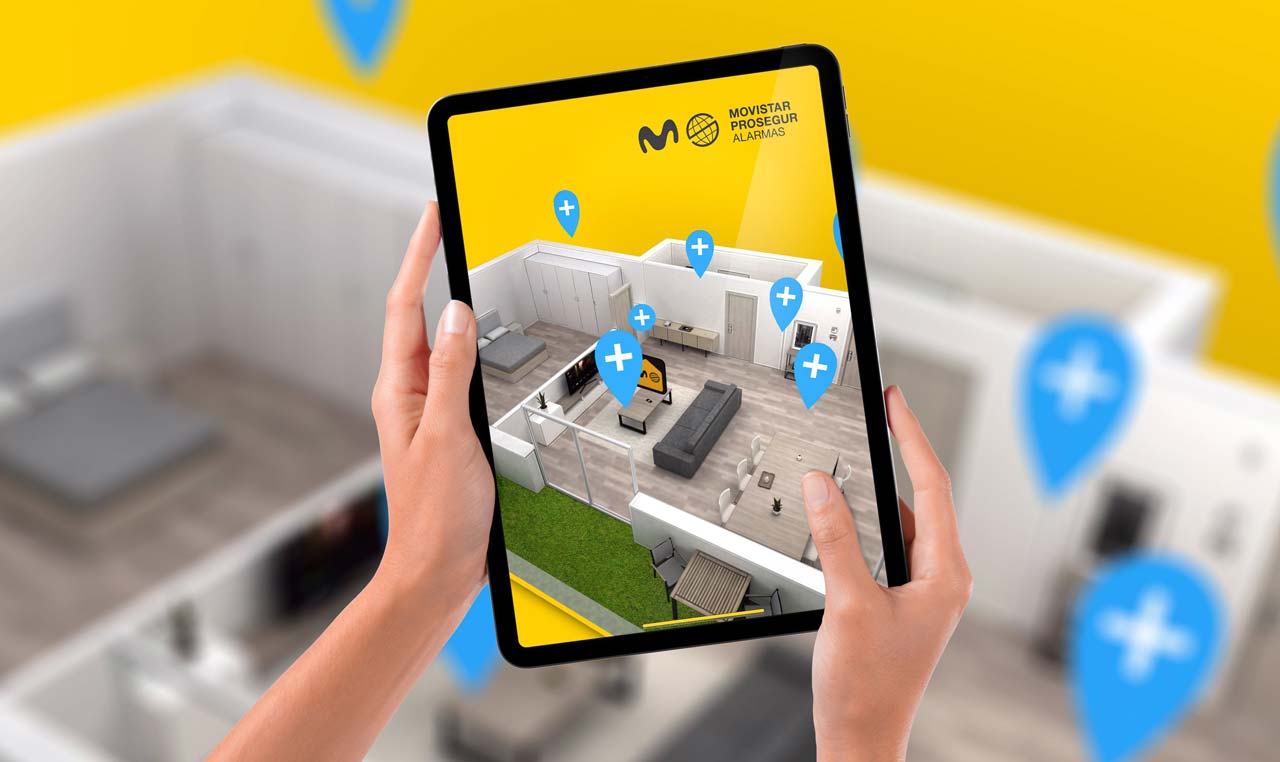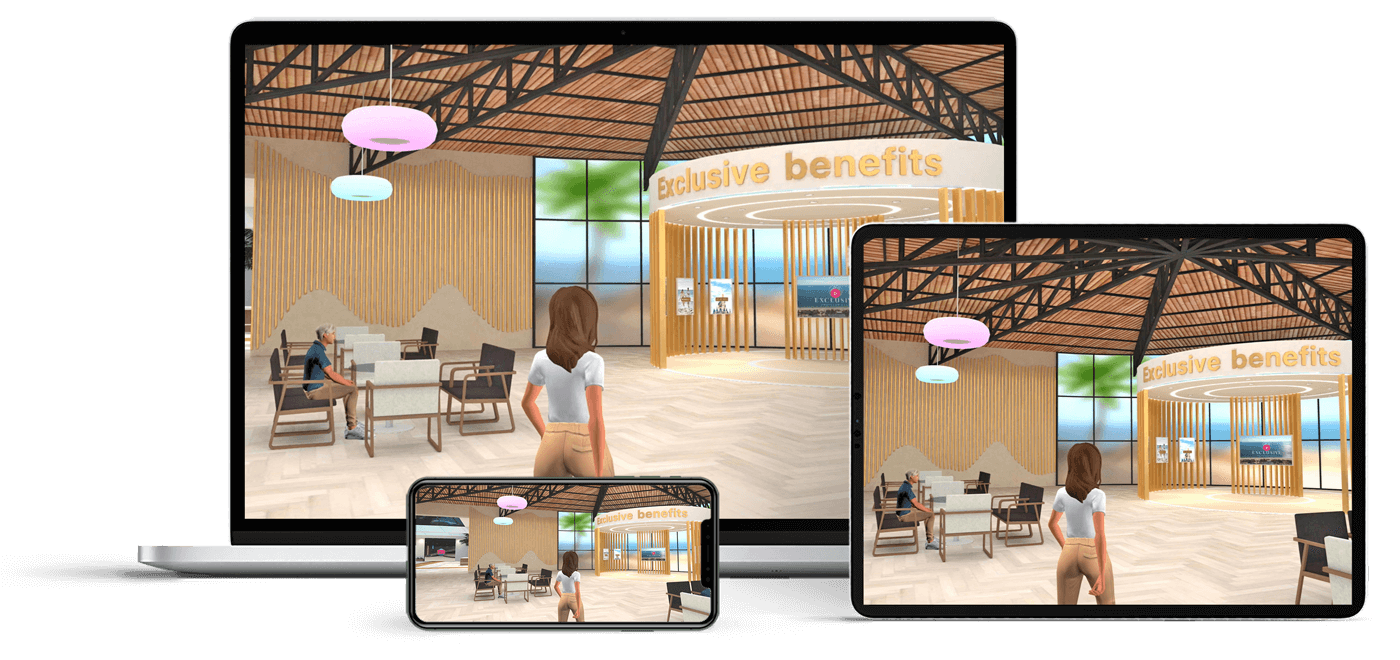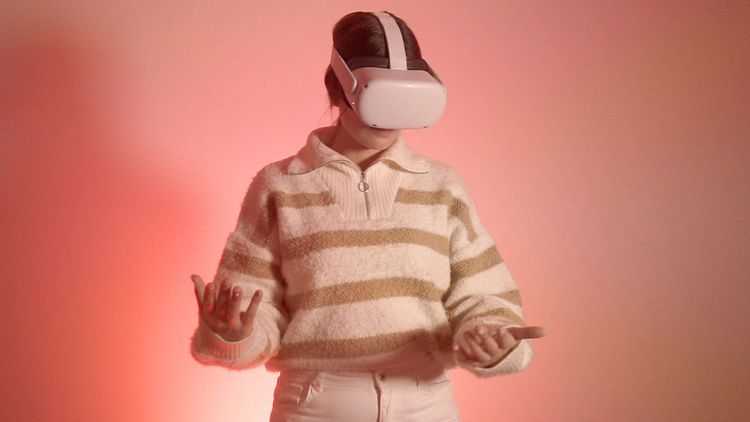Virtual tourism as a new trend
One of the sectors in which, without a doubt, living unique experiences is the basis of the business, it is tourism.. And thanks to technology, these experiences can be much more accessible, immersive, personalized and surprising. Today, we are witnessing the birth of a new trend in the industry: the virtual tourism.
Different experiences and technological solutions that not only drive innovation within the sectorare also able to extend the travelers' experience beyond their stay and trip, revolutionizing the before, during and after.
Discover with us all its possibilities.
What is virtual tourism?
Before knowing its typologies and most representative examples, it is time to define the concept of virtual tourism. This refers to the set of solutions, projects and experiences that take advantage of virtual latest technological innovations to transform the tourism sector.
These experiences cover a wide range of technologies: from the Virtual Reality to the Augmented Realitythrough the creation of virtual worlds in the Metaversethe development of WebApps and the incorporation of the Artificial Intelligence. Everything to offer a tourist experience that goes far beyond the simple trip.
Types of virtual tourism
Virtual tourism tools and experiences are adapted to all types of objectives. Experiential marketing actions, guided tours and also the development of cultural proposals that allow you to discover the heritage and historical value of the tourist destination in a totally unique way. These are some of the types of virtual tourism:
Trend Try before you buy
Before even choosing the destination, virtual tourism allows you to boosting the "try before you buy" trend (try before you buy), projecting what that trip will be like with experiences of Extended Reality.
Tour the hotel facilities yourself, see the landscape first hand, try out the activities that can be hired in Virtual Reality (VR) or travel virtually to the most exotic destinations. Everything for incentivize stockpiling and let the journey begin at home. From tourist offices or from FITUR itself, as in the case of the Virtual Reality tunnel developed for the Aragon stand at the international tourism fair.
Visiting places of the past
Virtual tourism not only allows us to get to know different parts of the world without leaving home, it also allows us to travel back in time. Thanks to Virtual Reality and Augmented Reality, we can reconstruct monuments, cities and areas of great historical value, to visit them in the times of their maximum splendor.
Activities that also offer a great contribution to the museumswhere history comes alive around us. Allowing museums and exhibition halls to contextualize objects and works, showing their true dimension or their appearance in the past, or even recreating the cultural and social environment in which the work of art was created.
You may be interested in→ Virtual Reality in museums: How is it being applied?
Personalized virtual guide
Undoubtedly, one of the most interesting applications of virtual tourism is the personalization of the travel experience of each of the tourists. Combining the Augmented Reality, with Artificial Intelligence generative and geolocation, tourist guides are becoming more and more optimized.
Becoming virtual guides always accessible and up to date, offering the opportunity to more information on site while touring any tourist area, making simultaneous translations and adapting the recommendations to each user's taste.
Also also gamifying the tourist visitwith gymkhanas or Augmented Reality routes that take leisure, entertainment and cultural visits to another level. It is also a more enjoyable and educational way to visit museums or natural sites, showing the user details that would otherwise go unnoticed.
Find out what gamification is all about in the following post→ What is gamification: benefits and examples.
Visiting inaccessible areas
Virtual tourism also allows us to travel to inaccessible areas. Either because they are natural sites of difficult access, places as remote as Everest or because they do not have the necessary measures to be visited by all users, regardless of their physical condition or disability.
This is the objective of the project LOARRE XRa social initiative of ITAINNOVA which seeks to take advantage of virtual tourism technologies to bring the beauty of the Loarre Castle and its nearly ten centuries of history to all audiences.
Traveling to destinations that do not exist
Can you imagine taking a guided tour of Harry Potter's Hogwarts School at Virtual RealityOr, thanks to the Augmented RealityYou can walk through the streets of King's Landing from Game of Thrones while strolling through Girona?
Virtual tourism allows us to take leisure and entertainment to the next level, touring fictional tourist destinations. New activities within the tourist proposals that allow to create new and surprising adventures. How to cross a suspension bridge between two peaks of the Aragonese Pyrenees in the project Frozen Emotion from Ibercaja.
Online community building
The tourist experience does not have to end with the return trip home, it can to continue in the virtual world. With the development of interactive and multi-user spaces in which the community between customers and the tourist destination is strengthened. With spaces in which one can share their travel experiences, continue to enjoy VR activities and where the loyalty through exclusive content, discounts and unlocking new interactive experiences.
Spaces that foster the community of users such as Exclusiversethe virtual world of Exclusive Traveler Club where its more than 80,000 members from all over the world have a space where they can connect with other members, attend club events and discover all the latest news about their memberships.
Benefits of Virtual Reality in tourism
Among the main proposals of virtual tourism, the following stand out experiences in Virtual Reality. This technology is characterized by being able to immersing users in totally digital alternative worlds. Where the senses cease to perceive the real world thanks to total immersion. Thus, users see, hear and even feel these virtual experiences, in the first person. and with great freedom of movement.
These are the main benefits of adopting Virtual Reality in the tourism sector:
- High flexibility and freedom of movement. Virtual Reality experiences offer a great freedom of actions to users, none of the movements are predefined. The users themselves jump, turn and walk through the virtual tourist destination at their own pace.
- Great savings for the traveler. Virtual tourism allows you to enjoy the experience of getting to know and discovering areas in other parts of the world without leaving home. A different, complementary format that allows people with fewer resources to have access to spectacular destinations.
- New (shopping) experience for users. Undoubtedly, virtual tourism is a great marketing action for hotels, travel agencies, tourist offices and tourist destinations. Allowing you to go beyond flyers and promotional videos, incorporating lemotion, the senses and the first person in experiential marketing activities.
If you are interested, learn about the Augmented Reality applications in tourism.
Examples of virtual tourism
Throughout this article we have been able to learn about some of the most important examples of virtual tourism that have already been launched. Virtualizing Romanesque castles, creating virtual spaces for interaction and community building, developing exciting adventures in Virtual Reality, digitally transforming museum visits and revolutionizing the marketing actions of tourism offices at trade fairs and events as important as FITUR.
All of these actions are based on different technologies - Augmented Reality, Virtual Reality, interactive installations, spaces in the Metaverse - but they have a common goal: surprise users by transforming the travel experience.
At Imascono we know that the future of the tourism sector depends on the creation of interactive and immersive experiences that users fall in love with and that generate a real emotional connection. This is why virtual tourism is positioned as one of the main tourism trends for the coming years.
Our team has been more than 12 years developing Extended Reality experiences both nationally and internationally. With our methodology, we focus on understanding your specific objectives and requirements in order to offer you an efficient and high quality solution.
Don't waste any more time looking for a generic solution that doesn't fit your needs. Contact us at y find out how we can develop the perfect virtual tourism project for your tourism experience.




